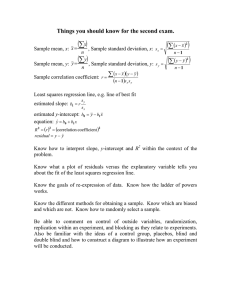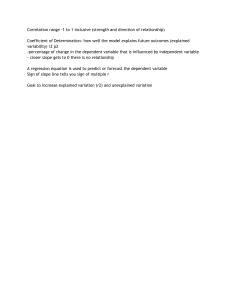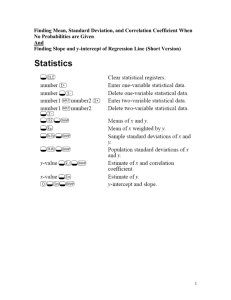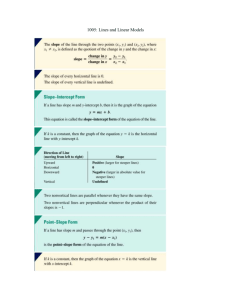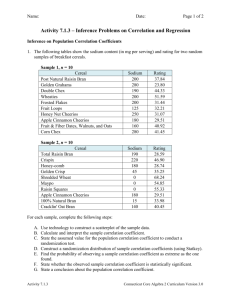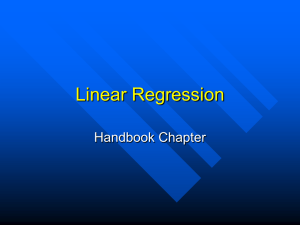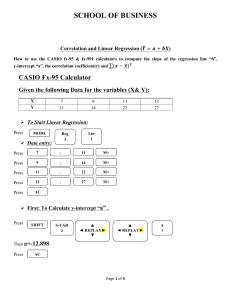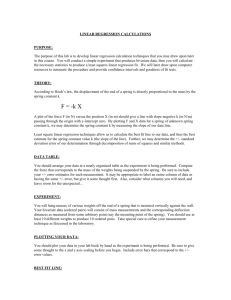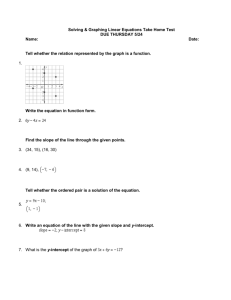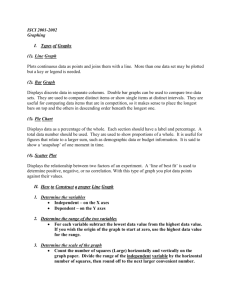Practice Exam Chapter 12 - SIMPLE LINEAR REGRESSION
advertisement
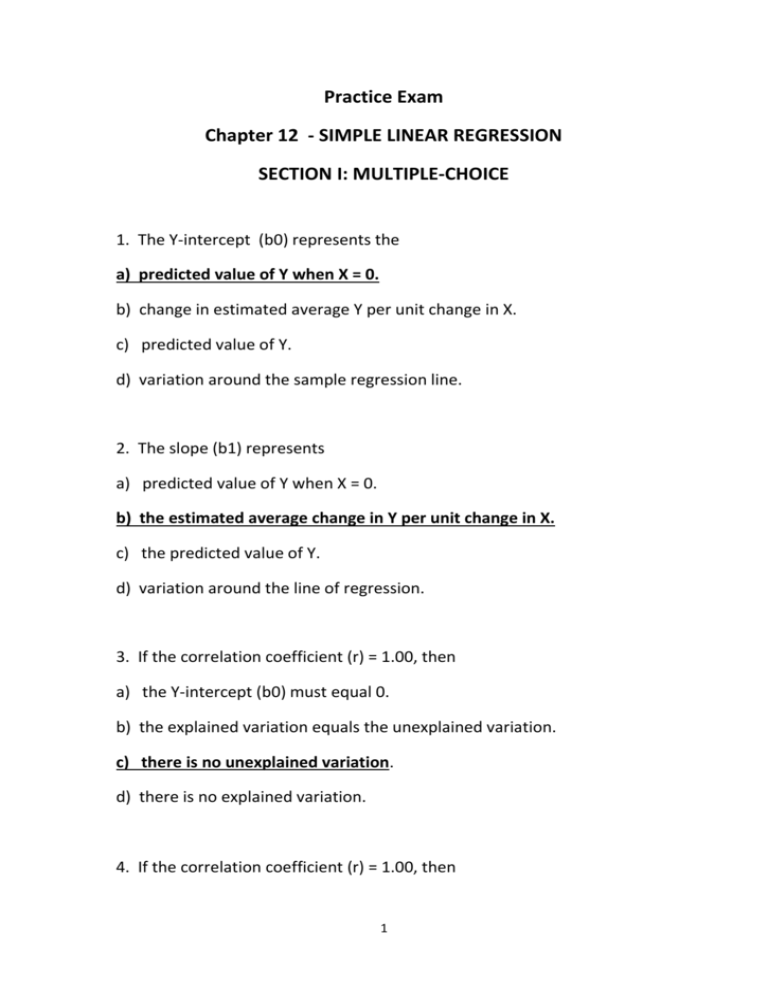
Practice Exam Chapter 12 - SIMPLE LINEAR REGRESSION SECTION I: MULTIPLE-CHOICE 1. The Y-intercept (b0) represents the a) predicted value of Y when X = 0. b) change in estimated average Y per unit change in X. c) predicted value of Y. d) variation around the sample regression line. 2. The slope (b1) represents a) predicted value of Y when X = 0. b) the estimated average change in Y per unit change in X. c) the predicted value of Y. d) variation around the line of regression. 3. If the correlation coefficient (r) = 1.00, then a) the Y-intercept (b0) must equal 0. b) the explained variation equals the unexplained variation. c) there is no unexplained variation. d) there is no explained variation. 4. If the correlation coefficient (r) = 1.00, then 1 a) all the data points must fall exactly on a straight line with a slope that equals 1.00. b) all the data points must fall exactly on a straight line with a negative slope. c) all the data points must fall exactly on a straight line with a positive slope. d) all the data points must fall exactly on a horizontal straight line with a zero slope. 5. Assuming a linear relationship between X and Y, if the coefficient of correlation (r) equals – 0.30, a) there is no correlation. b) the slope (b1) is negative. c) variable X is larger than variable Y. d) the variance of X is negative. 6. The strength of the linear relationship between two numerical variables may be measured by the a) scatter diagram. b) coefficient of correlation. c) slope. d) Y-intercept. 7. In a simple linear regression problem, r and b1 a) may have opposite signs. 2 b) must have the same sign. c) must have opposite signs. d) are equal 3
